Cell & Gene Therapy – Qualification support for a Contract Development Manufacturing Organization
About the Client
The Client is a contract development manufacturing organization.
The Client facility includes manufacturing space rated Grade-B with Grade-A operations occurring in Bio Safety Cabinets. Labs for QC support and a warehouse are also on the premises.
The Client was building an allogenic T-cell therapy process located in southern California. The process began with human blood received from donor sites.
The first project scope involved harvesting Peripheral Blood Mononuclear Cells (PBMCs) from donor blood. The PBMCs were received from another source previously through a “manual” process, and the Client was moving towards an “automated” harvesting capability. PBMCs are used for multiple products in their pipeline.
Process and equipment overviews are provided below:
1. CYTIVA SEPAX - a “cell processing system” that would separate a solution (i.e., donor blood) into individual components. Two separate cycles on the Sepax were used to harvest PBMCs from the blood.
This equipment required the use of Cytiva’s Chronicle Software which was realized later in the project.
This equipment and software were designed for manufacturing, but given the novel process at the Client, challenges arose in the effort to meet the validation requirements of 21 CFR P11 compliance.
2. SYSMEX HEMATOLOGY ANALYZER* – is a blood analyzer that was used to obtain a Hematocrit measurement:
First, the blood would be run on the Sepax using the first cycle.
After this cycle, a sample was taken, and the Sysmex was used to measure the hematocrit value of this in-process fluid.
That Hematocrit value would go into the batch record. It would then be used as a parameter that an operator would enter into the Sepax.
3. There was ancillary equipment, including tubing welders, calibrated pipettes, and other equipment that assisted in the process for the Sepax. BSCs also went through qualifications, including smoke studies and other typical qualifications for such equipment/space.
* Note: this piece of equipment was not made for manufacturing use and is generally used as a clinical instrument. It did not conform to the regulations/policies that any standard GMP equipment would. It was not designed with 21 CFR P11 or any other GMP requirements in mind.
The Challenge
With a design that did not comply with GMP policies, the Client needed to create policies and procedures that would meet the unique requirements of the process.
Challenge # 1 - Equipment Set-up Logistics
The Sysmex analyzer required multiple reagents, a few of which required close connection to the instrument. These came in cardboard cartons that are only available from the manufacturer of the instrument. There was no other option. Cardboard is not allowed in Grade B manufacturing space, so the equipment had to reside in a lab across the hallway. This required transferring the sample using a pass through. The value would have to be entered in the MES for the operators in the clean suite to see it.
In addition, the Sysmex analyzer was not designed for manufacturing use and did not communicate with software typically used in a GMP manufacturing facility (LIMs, DCS, etc.). As such, software interfaces were needed, however, these were also only developed for clinical, not manufacturing environments.
A similar problem also existed with the use of a small-scale, automated syringe-filling machine which was developed for a lab environment vs. manufacturing.
All controls had to be captured in SOPs and life cycle documents for the operators and administrators to ensure compliance. Manual documentation methods were needed to meet the data integrity requirements.
In sum, the specialized nature of the equipment and process required a unique approach to meeting 21 CFR Part 11/ EU Annex 11 requirements.
Challenge #2-IT systems such as the Chronicle software claimed compliance but required further validation during assessments due to their “software as a service” structure.
The data for the Client’s process was to be stored on a “cloud” server provided by the manufacturer which meant that backup and archival would be controlled by the supplier.
However, it is the responsibility of the company who owns the data to ensure access, accuracy, and data back up in accordance with cGMPs.
Data integrity was critical. Server validation (w/IT group) was needed to ensure proper data transfer as well as Supplier Assessments with the responsible supplier quality team was also required.
The Client had knowledgeable personnel about their novel process and laboratory equipment but were less knowledgeable about regulations for commercial products.
For example, the inspection approval was planned for the site without a mature Quality System to manage validation requirements.
Challenge # 3 – Procurement/Vendor Management of single-use Eppendorf bioreactors
For the Cell & Gene industry, it’s critical to implement the V-Model approach before the purchase of process equipment so that vendors are clear on the client’s expectations. This is critical to keep the project on schedule while meeting overall compliance.
AVS was involved early in vendor qualification and due diligence due to insufficient vendor capability.
The Client was experiencing significant equipment issues which plagued schedule and compliance status.
Customer Problem:
IT software was needed to communicate with the bioreactors. The installation and debugging of this software was challenging because few people at the vendor company understood the software.
o Jointly working with Client engineering, AVS configured the software so that it could be used in a GMP environment.
o Unfortunately, this software was sold as 21 CFR Part 11 compliant which was not the case when installation began. A key lesson learned is that evidence of 21 CFR Part 11 compliance is critical prior to final Procurement decision.
The Benefit to the Client:
o AVS has qualified numerous single- use bioreactors with other biotech Clients.
o We are effective and efficient in dealing with equipment vendors for project needs to ensure the required methodology is in place for the compliance requirements.
Overall Documentation Support:
o AVS was involved with the following documents, essentially managing the
o compliance strategy under the guidance of the validation management.
o 21 CFR PART 11 Assessment– IT Document
o Administration SOP – IT Document
o Functional Specification – IT Document
o Manufacturing SOP – Manufacturing
o User Requirement Specification – Engineering Document
Our Impact:
With AVS’s services, the Client was able to:
o Understand the limitations of their equipment.
o Enhance SOPs and processes to better support regulatory requirements.
o Leverage project management tools. We were able to produce effective and efficient reports keeping the project on time and within budget.
o Complete qualifications for novel, automated process.
o Work seamlessly with internal quality/validation team leads.
o Handled project delays expeditiously with client leadership.
o Augmented knowledge gaps which expedited the document creation, review, editing, and approval process.
o Provide guidance on proper documentation needed across various functions (IT, Engineering, MFG) involved to ensure that the use of the equipment was limited in a way that compliance could be achieved.
o Provide training and methodology in implementing required policies, SOPs, and test protocols to ensure that all applicable guidelines are met and there’s documented evidence for any qualification/validation effort.


